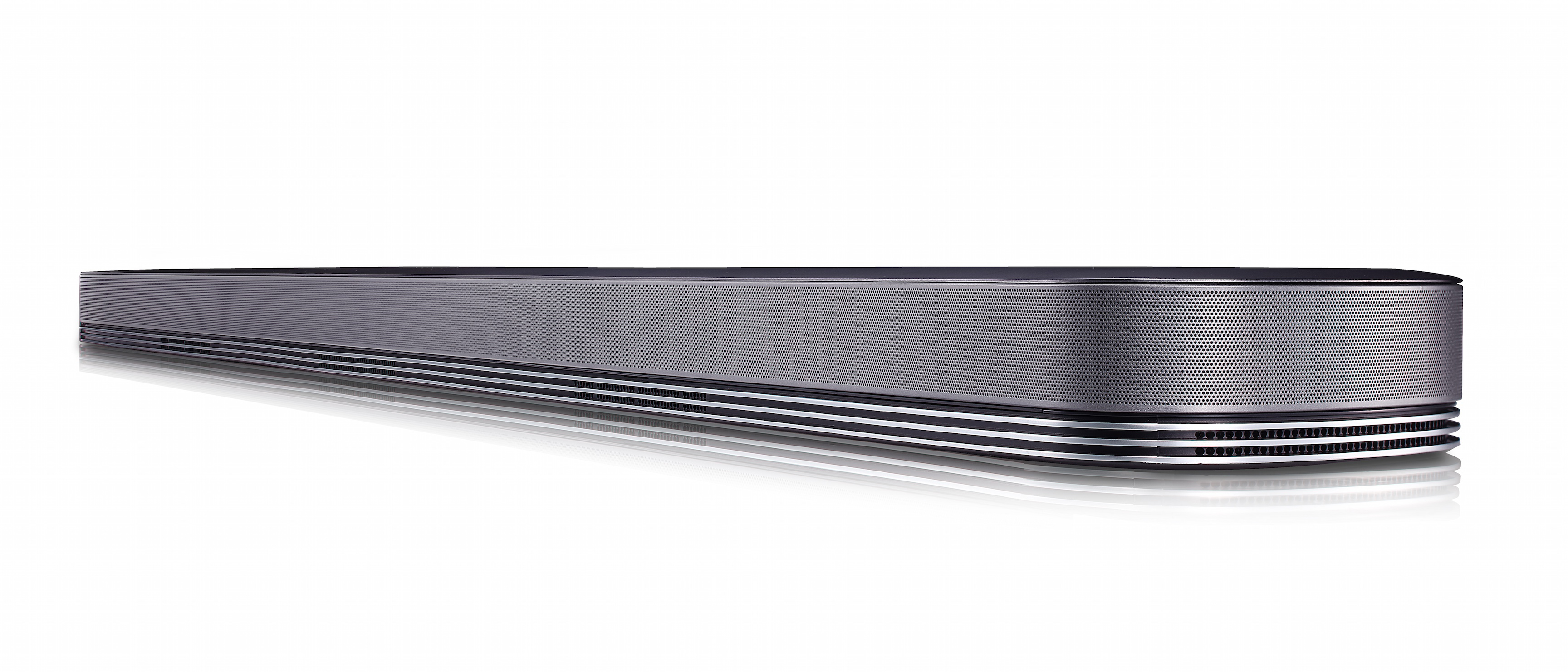TechRadar Verdict
The sound quality of LG’s debut Dolby Atmos soundbar is pretty incredible. The power and scale of its sound beggars belief considering how attractive and compact the system is, while the sense of height in the audio mix is uncanny. The UK price feels a bit steep, though, and many people - including us - are currently experiencing HDMI handshake issues.
Pros
- +
Spectacularly powerful sound
- +
Remarkably compact design
- +
Chromecast support built in
- +
LED display
Cons
- -
Only one HDMI input
- -
HDMI handshake issues
- -
UK price is high
- -
Limited rear/overhead channel effects
Why you can trust TechRadar
Dolby Atmos soundbars are the hottest trend in home entertainment audio this year. Pretty much every major AV brand has included one or more Atmos soundbar in its 2017 range, and Samsung has already impressed us with a couple of high-end models.
Now, it’s the turn of Samsung’s arch rival LG to prove that adding Dolby Atmos to a soundbar makes much more sense than you might expect it to – meet the LG SJ9 Sound Bar.
LG’s debut Atmos soundbar is a 500W, £999/$799 system that comes in just two parts: a main bar containing a 5.1.2 speaker array, and a separate wireless subwoofer. And considering that it only has these two parts, it’s a brilliant, bold system from the current king of OLED.

Design
The SJ9 is the most attractive Dolby Atmos soundbar we’ve seen so far. It sits lower than the slightly chunky Samsung HW-K950 and Samsung HW-K850 models, benefits from some cutely rounded ends, and enjoys a really attractive smooth finish versus the industrial grilled finish of Samsung’s models.
The simple circular upfiring speakers cut into the top edge look cute, too, as do the couple of strips of silvery metal along the bottom of the front edge.
The subwoofer sports a more cubic design than the relatively slim sub you get with Samsung’s Atmos soundbars, making it potentially a little harder to tuck away in your living room. But it also looks more attractive, and feels better built.
The only sour note in the SJ9’s design is its remote control – it’s too small, too obliquely labelled, and too random with its button layout to ever feel like a comfortable companion for such a premium AV product.
Sign up for breaking news, reviews, opinion, top tech deals, and more.
Dimensions: 1200 x 58 x 145mm (W x H x D) | Speaker configuration: 5.1.2 | Claimed audio power: 500W total, broken down into 2 x 43W fronts, 43W centre, 2 x 43W rears, 2 x 43W top, and a 200W subwoofer | Connections: Single 4K/HDR HDMI loopthrough, one optical audio input, 3.5mm audio port, 2-way Bluetooth, wi-fi, USB (service only), Ethernet port
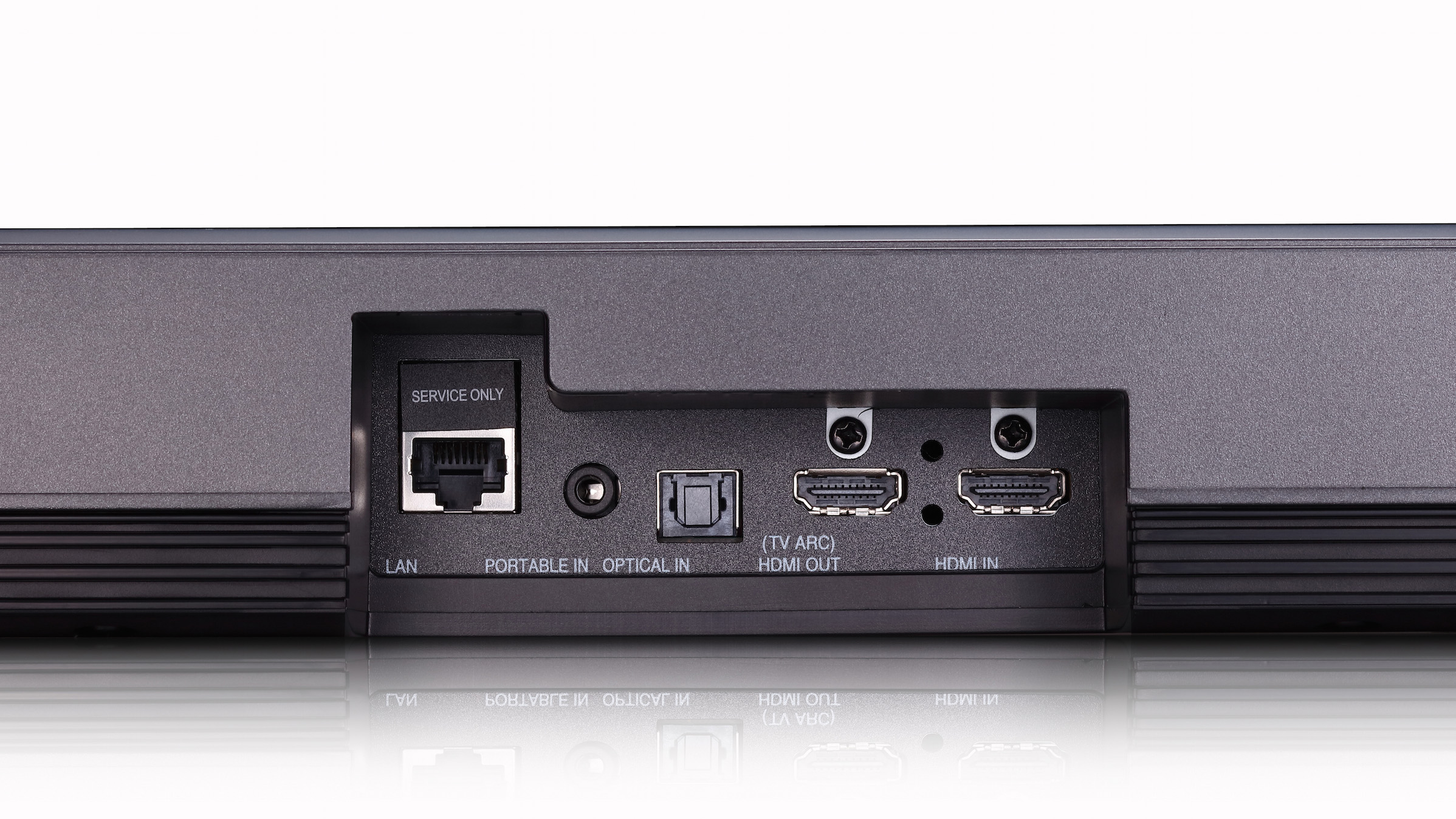
Features
The SJ9 doesn’t just depend on its high discrete channel count and extreme power – it’s also pretty flexible when it comes to what you can connect to it.
There’s a 4K-capable HDMI loopthrough, so you can loop an HDMI output from, say, an Ultra HD Blu-ray deck through the soundbar and onto the TV, with the soundbar extracting the audio track - including Dolby Atmos if your source supports it - en route. There’s also a 3.5mm audio input and an optical audio connection, or you can choose to go wireless via either Bluetooth 4 or Wi-Fi.
Impressively, the SJ9 supports Chromecast playback, enabling the casting of millions of songs, podcasts and radio stations from your phone directly into the soundbar using services such as Deezer, tunein, Google Play Music, Pandora, iHeart Radio, Rhapsody, and Spotify. You can also use your phone as a remote to search, play and pause music, or adjust the volume.
Confused about which source is currently selected? You can easily track which audio input you’ve got selected via a simple but very readable LED on the soundbar’s front, and you can control the soundbar’s volume using many brands of TV remote control.
In terms of audio features beyond the speaker configuration and Dolby Atmos support, the SJ9 supports Hi-Res Audio, and provides 24-bit/192kHz upscaling for 16-bit/48kHz original sources. LG also claims that the SJ9 employs an adaptive audio system that analyses the frequency levels of the sound you’re feeding it to produce an optimum sound mix based on what you’re watching.
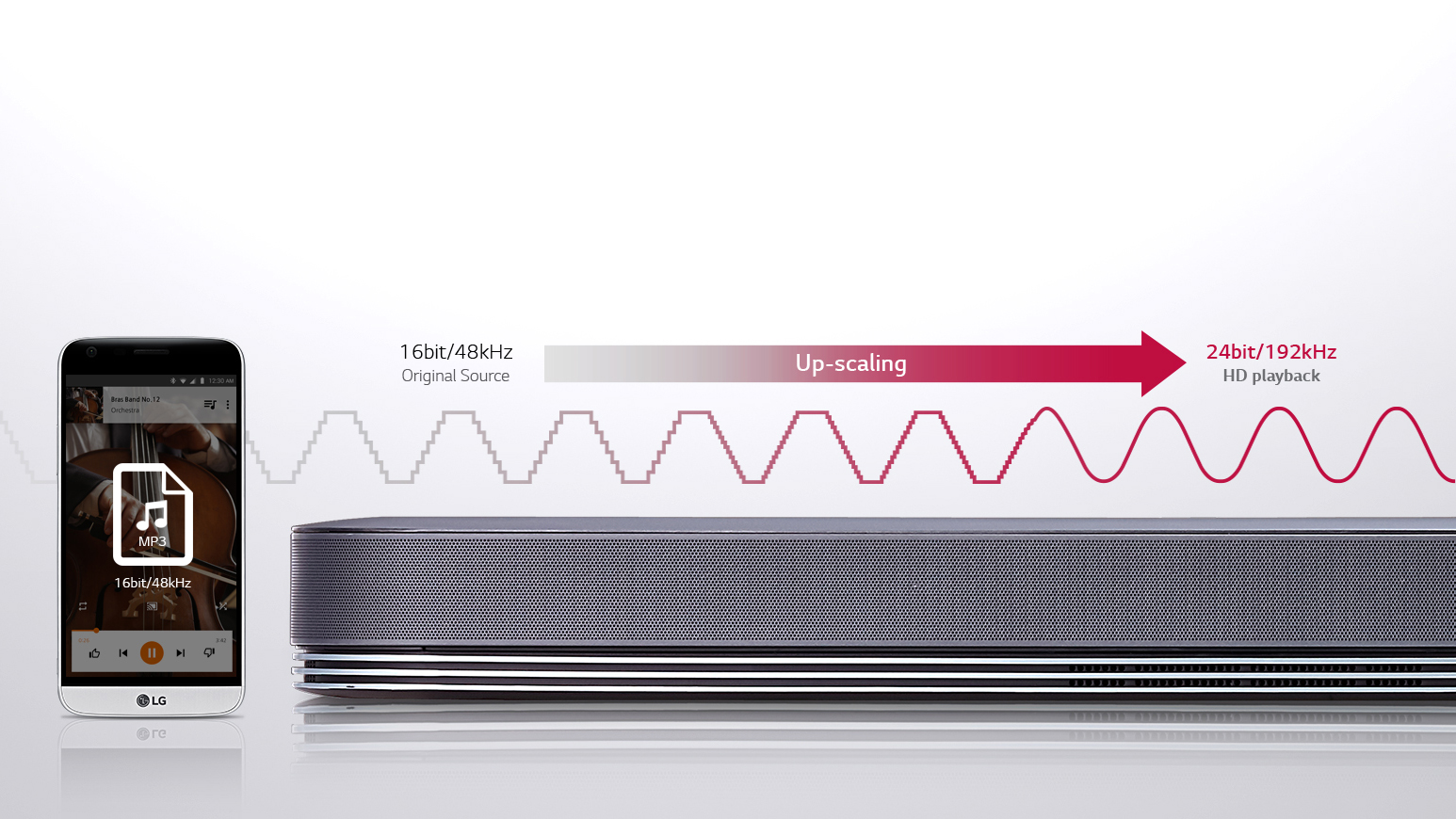
For instance, it can opt to emphasise dialogue if its algorithms detect that’s the important thing to focus on, or it can focus on making the sound more aggressive for action scenes.
There’s also a separate audio processing system that can slightly reshape the sound depending on what volume level you’ve got selected, so that you always get the most effective and accurate sound at any volume level. There are a series of different audio presets (including Movie and Music options) to play with - though note that if the SJ9 detects a Dolby Atmos source, that’s the only audio option you can use.
You can adjust the audio delay from the soundbar between 0 and 300ms (though pleasingly we didn’t feel the need to adjust this at all with the sources we played on the SJ9), and the SJ9 can be integrated into LG’s Music Flow wireless speaker network. You can also use LG’s upcoming NP8540, NP8740, NP8340 and NP8350 wi-fi speakers as optional rears if you wish.
One last good trick of the SJ9 is that despite its headline-grabbing Dolby Atmos talents, LG confirms that can also decode DTS soundtracks (which actually make up the majority of the soundtracks on Blu-rays) to 5.1. Samsung’s Atmos soundbars, by comparison, currently only decode DTS into stereo.

The loopthrough issue
Before getting into how the SJ9 sounds, we feel the need to report some issues with its HDMI loopthrough. We experienced significant issues with getting 4K HDR Blu-ray pictures from our Oppo UDP-203 Ultra HD Blu-ray Player to pass through to a Samsung KS9500 TV correctly.
Using the default Auto HDR and resolution picture settings on my Oppo (settings which worked just fine with the Samsung K850 and K950 Dolby Atmos sound bars, when using exactly the same HDMI cables) through the SJ9, we couldn’t get a picture to appear on the TV at all unless we turned off the TV’s UHD Colour setting for the relevant HDMI input ... even though this should be set to On for any HDR sources.
The only way we could get a picture to appear on the Samsung TV with HDMI UHD Colour on was to switch the colour output on the Oppo to YCbCr 4:2:2. Neither the Auto nor 4:4:4 settings worked. Even when we got a picture to play OK in 4K HDR, sometimes bizarrely the picture would disappear again when we pressed stop and tried to call up the Oppo’s menus, leaving us having to toggle the TV’s UHD Colour On/Off feature again, or reset the Oppo by holding down its remote’s Resolution button for three seconds.
A fairly cursory search online reveals quite a few other users experiencing similar issues, so we approached LG for an explanation and received the following response: “LG has been made aware of an issue when attempting to connect an external 4K device to certain LG soundbars. In some limited cases the soundbar is unable to identify the source to transmit the proper output signal. The issue appears to be related to the way the Extended Display Identification (EDID) tables are interpreting the source information in specific situations. LG engineers are now working on a firmware update to address this issue to be made available starting at the end of June to affected LG soundbar customers. We apologise for any inconvenience this may have caused.”
If possible we will try to have another look at an SJ9 after the promised firmware is introduced, to see if it does indeed fix things. But, for now, know it has some issues here.
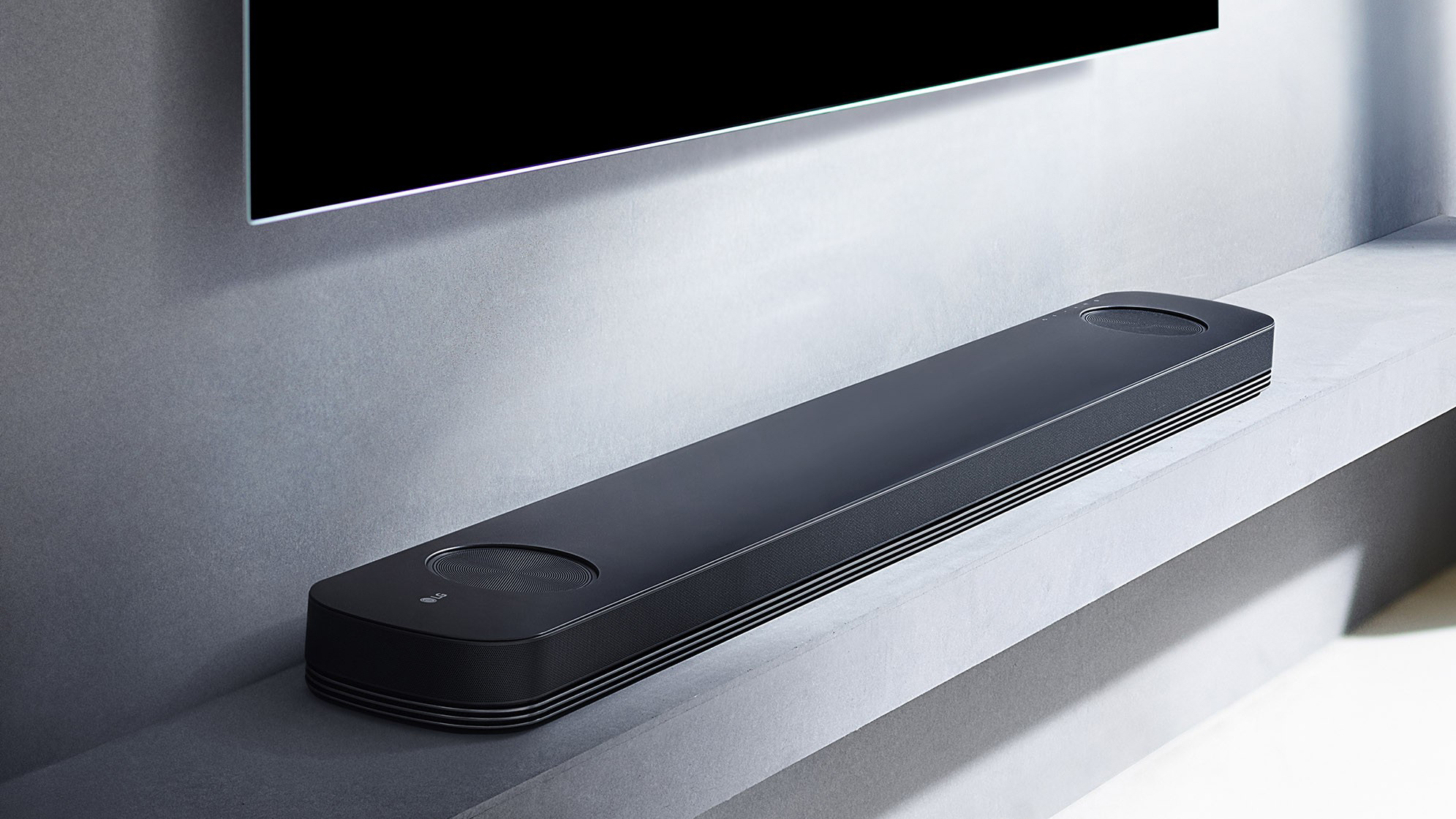
Performance
Right, that’s (most of) the bad news. The very good news is that when the SJ9 worked, it sounded brilliant.
For starters, it produces a remarkably large sound stage that extends sideways and upwards much further than those produced by most ‘single body’ soundbars. The sense of verticality is particularly outstanding, since as well as stretching pretty much from screen to ceiling (no matter how high your ceiling might be!) the wall of sound is able to place details within it with jaw-dropping precision.
With the soundbar placed below our TV screen it managed to pinpoint the relative position of actors’ voices along both the horizontal and vertical axes even when the voices are coming from points onscreen as little as two inches above, below or to the side of each other.
While most of the really fine audio detail accuracy inevitably takes place in relatively close proximity to the screen, the detail positioning does extend all the way to the ceiling when you’re dealing with extreme sound effects such as helicopters or planes flying overhead, and all the way to your side walls when dealing with left and right sound effects that are taking place off screen.
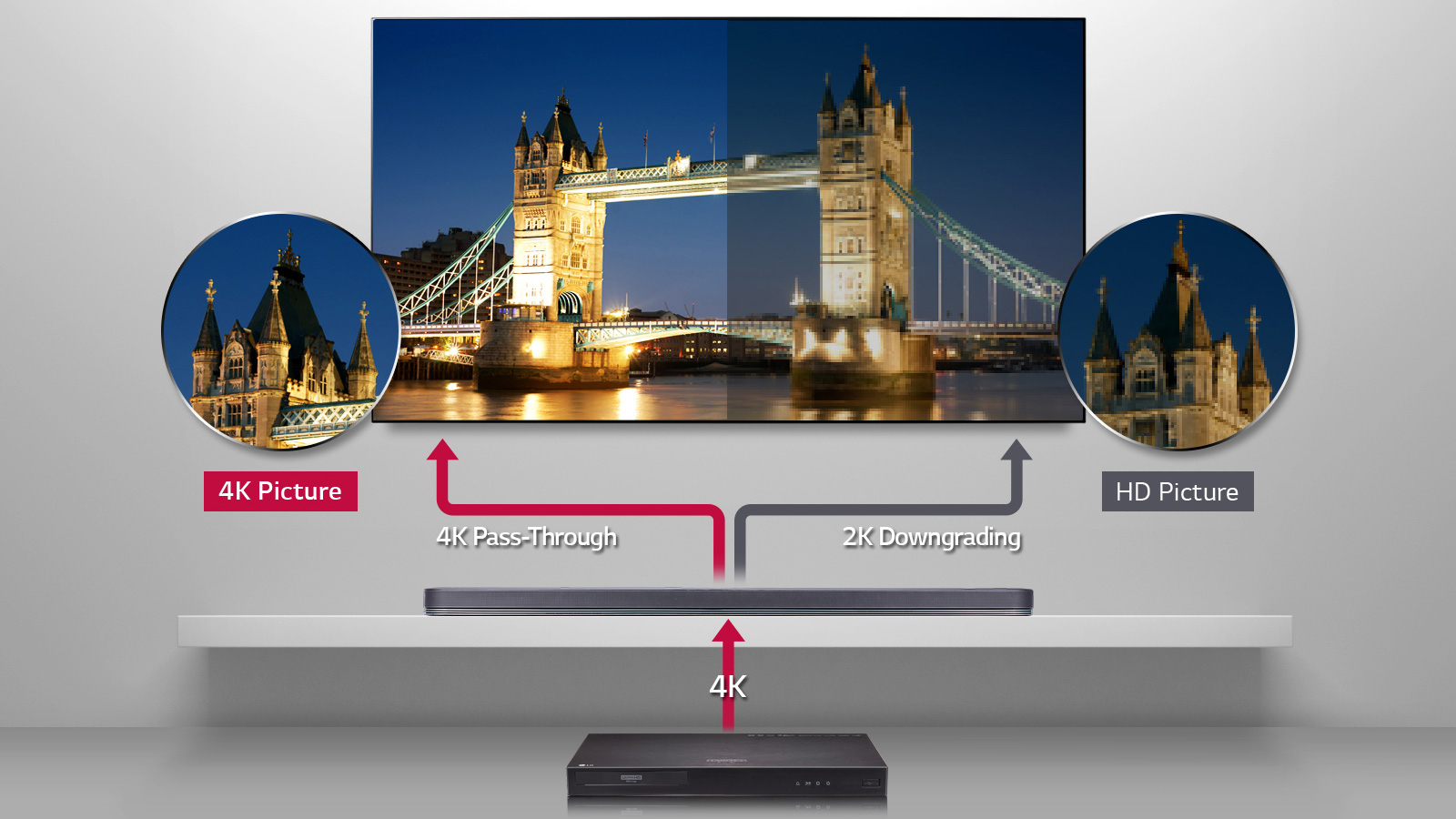
The SJ9 underpins its arguably peerless audio detail precision with huge amounts of power too. You can turn it to massive, room-filling volumes without it suffering even a hint of distortion and without it starting to sound either too bright in the treble range or two heavy in the bass range.
The subwoofer actually gels pretty much flawlessly with the SJ9’s mid-range drivers; bass gets seriously deep, yet there’s no sense of any gap in the dynamic range between the deepest bass depths and the lower mid-range.
Another great strength of the SJ9’s sound is its handling of vocals. It can accurately place voices within the sound ‘wall’, but it also does a great job of keeping vocals clear and forward in the mix even during very dense sound moments. Even better, these voices always sound perfectly contextualised within their onscreen environment, rather than artificial or forced.
One other clever thing about the SJ9’s audio management is the way it deals with ambient effects and musical scoring. These sorts of soundtrack elements can become problematic when you don’t have any ‘real’ rear speakers to help out, yet the way the SJ9 places them at the left/right edges and bottom of its sound ‘wall’ proves surprisingly effective in ensuring that they’re still potent without taking on undue prominence in the mix.
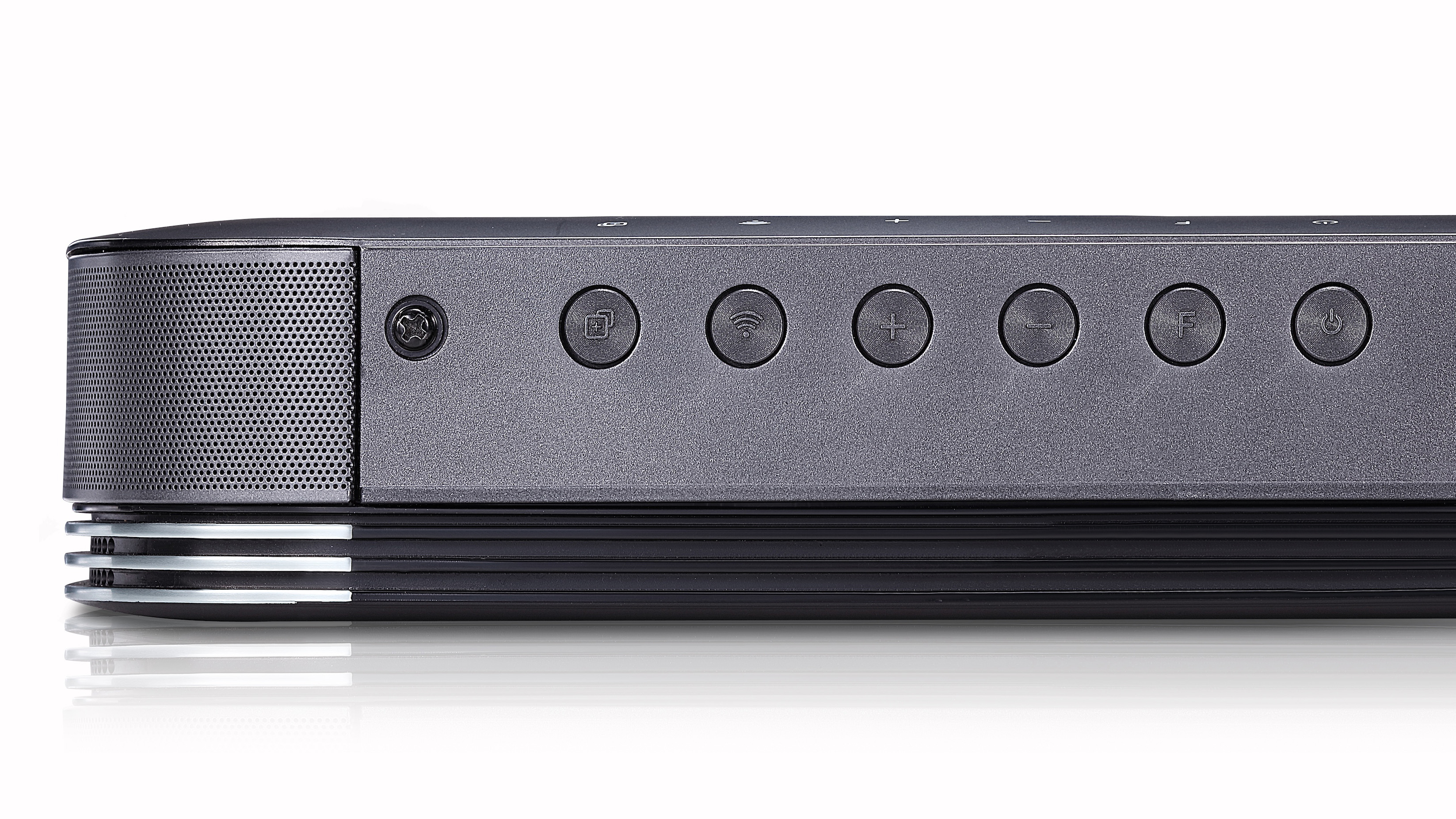
Despite its winningly aggressive approach to films, the SJ9 is also a very capable music performer: CDs sound clean, open and well timed, and again the subwoofer still ties in very effectively with the work being done by the speakers in the main soundbar. With streamed compressed audio files, the upsampling does a mostly very fine job of opening up the dynamic range, expanding both the treble and, especially, bass ends of music of all types without the results sounding forced, baggy or clumsy. Even very dense tracks such as Placebo’s Taste In Men and Ride’s Seagull play without the sort of sibilance or ‘swirling’ ebbs and flows that can characterise playback of such tracks on lesser speakers.
That said, there are a few issues here. Relatively quiet tracks and moments can lack the delicacy and warmth you get with good dedicated hi-fi speakers and while the SJ9 delivers a remarkably detailed vertical wall of sound in front of you, there’s no real sense of any sound coming from directly above you as you would expect to hear with a full Atmos speaker array.
The Samsung K850 system works slightly better in this respect, since although it doesn’t wrap you in the full Atmos ‘bubble’ of sound due to its lack of any rear speakers, its angled top speakers do at least occasionally deliver a sense of sound coming from directly overhead.

We also didn’t experience any real sense of surround sound from the SJ9, despite it carrying dedicated ‘rear channel’ drivers at the extremities of its main soundbar. The best you can say is that you experience fleeting sounds to your left and right sides during very sharp transitions, or with pronounced ambient effects such as blowing wind.
Finally, while the SJ9 handles DTS sources better than Samsung’s Atmos soundbars currently do, it still seems a shame that it doesn’t also decode DTS:X. Certainly its DTS 5.1 mixes sound markedly smaller in scale and less dynamic than its Dolby Atmos playback.
Other soundbars to consider
Superior though the SJ9 is with its features and most aspects of its performance, its £999 UK prices feels a bit too expensive, especially given that it’s available for just $799 in the US. Even with post-Brexit prices we would’ve hoped to see that US price translating to £899 or even £799.
That said, if you can push your budget a bit higher, Samsung’s HW-K950 is the ultimate Dolby Atmos sound system thanks to its inclusion of powerful wireless rear speakers and the way angled up-firing speakers in both the front soundbar and the rears create the Atmos bubble of sound surprisingly convincingly.
Similarly, Samsung’s HW-K850 ditches the HW-K950’s rears and crucially doesn’t include ‘pseudo’ rear channel speakers in its soundbar component like the SJ9 does, denying it some of the soundstage width and clarity you get with the SJ9. However, it does manage to push its height effects further forward than the SJ9, giving you more of a sense of Atmos effects appearing above you.
Verdict
If you buy an SJ9 now you may find yourself having to wrestle with HDMI loopthrough issues until LG releases its promised firmware update. We’d also argue that it’s a touch expensive for a soundbar without real rear speakers.
The SJ9 is nonetheless a mostly stunning and in some ways unique bit of home cinema kit. It looks stunningly compact and pretty, it’s surprisingly potent and flexible with music, and best of all it’s capable of delivering an immense, cinematic soundstage that justifies its Atmos claims by delivering almost miraculously accurate vertical effects.
- Looking for other options? These are the best soundbars of 2017

John has been writing about home entertainment technology for more than two decades - an especially impressive feat considering he still claims to only be 35 years old (yeah, right). In that time he’s reviewed hundreds if not thousands of TVs, projectors and speakers, and spent frankly far too long sitting by himself in a dark room.
